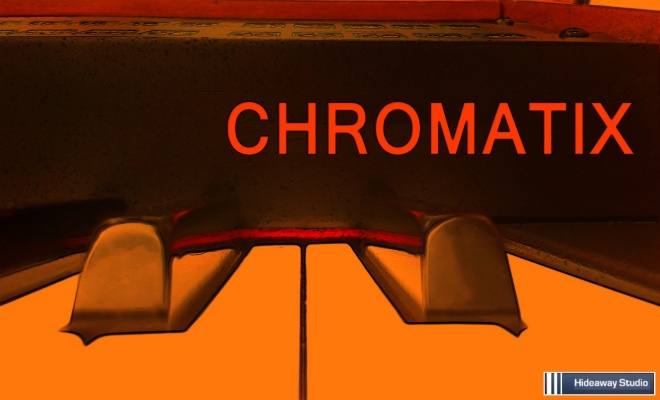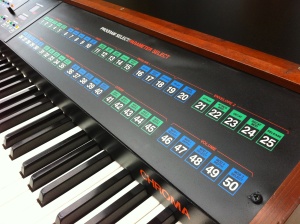
As with all of my Kontakt instruments, the ethos behind them is not so much an attempt to capture and recreate the past but an opportunity to present the original source material as textures, elements and building blocks in order to create something new. At the same time, hopefully some of the original beauty and character of these rare and vintage instruments and equipment will shine through.
A long time in the making, I have been wanting to release for some time now a sequel to one of my most popular Kontakt instruments to date which has been a personal favourite of mine since the beginning. As I’m sure many are aware, I have always had a bit of a soft spot for evocative cinematic synth strings, and especially pseudo realistic string ensembles. It has been very exciting for me that some of these string ensembles and textures have found their way into a number of major music productions around the world.
My original String Collection was largely based on early string synths such as the ARP Omni and the Eminent 310U. I wanted to add several new offerings from several other families of synthesizer. The reasoning behind this was an attempt to broaden the sonic territory in what has proven to be a remarkably effective and easy to use layering engine. Some extra elements from my beloved 1938 Novachord #346 have been introduced including a very “warts & all” string timbre straight from the beast. Such elements may sound a little too antique to some in isolation but can form a remarkable secret element when layered with others in the layering engine. It is hard to believe this quarter ton 163 tube monster is 80 years old this year!
Around 30 instruments were captured and I’ve tried to draw upon a number of basic synthesis methods including divide down/formant, classic subtractive, DCO, digital FM and additive as well as capturing some tube synth textures from three vintage synths. Synths included the DK Synergy and ultra rare Mulogix Slave-32, Rhodes Chroma, Octave Cat Voyetra-Eight, Farfisa Syntorchestra, ProphetVS, Elka Synthex, Oberheim OB-X and Matrix 1000, Korg PS-3100. Tube synths included the Hammond Novachord, a Jennings Univox J6 and a heavily modified Cordovox CG-1.
I have also tried to introduce a number of unique processing methods to add tonal colour, character and movement to various sounds. This included a rather bizarre idea I had to play raw material through a speaker and record it using an old carbon granule GPO telephone mic. This imparted a wonderful crunchy antique character which when layered with the original source produced a rather beautiful effect. Other methods involved recording on and off of rather worn ¼” tape on a wonderful 1969 Revox G36 tube reel to reel. An original 1969 Dolby A-301 (the world’s first Dolby dynamic noise reduction system) and a DBX II 128 compander along with a gorgeous Binson tube Pre-Mixer were also used to good effect. A number of triple ensembles were used to process single string timbres from various synths into something much more akin to the original Solina strings. This included the often overlooked Korg SDD-3300 triple modulated delay and retasking the triple BBD chorus ensemble in the little Böhm Dynamic 12/24 as well as the wonderful “Orbitone” generator in the Eminent 310U. Truly uniquely, I used the latter to process some of the string timbres from the Novachord to produce some very special ensembles!
A number of layers and blends were brought together to form the basic 36 instruments loaded into the layering engine to form String Collection II.
Equipment Used:
Novachord #346 is now 80 years old & has proven to be a truly unique sonic ingredient!
Sources:
1938 Novachord #346, Eminent 310U, Minimoog T2798E, ORLA DSE-24,
Böhm Dynamic 4×9, Oberheim OB-X, Jennings Univox J6 tube monosynth,
Studio Electronics Omega 8,Sequential Prophet 600, Sequential Prophet VS,
Octave Cat Voyetra Eight, Sequential Six-Trak, Rhodes Chroma, Korg PE-1000,
Korg PS-3100, Waldorf microWave I, Yamaha TX802, Yamaha TX81Z,
Custom Cordovox CG-1 tube polysynth, Oberheim Matrix 1000, DK Synergy II+,
Mulogix Slave 32, Evolution EVS-1, Roland D-110, Roland JX-8P, Roland JUNO-106,
Roland VP-330, Roland alpha-Juno II, Elka Synthex, Farfisa Syntorchestra,
Crumar Performer, Crumar Bit One…
Processing:
Passive formant resonator circuit, GPO Carbon Microphone, Revox G36 tube half-track,
1969 Dolby A-301, DBX II 128 Compander, Binson tube Pre-Mixer, Korg SSD-3300…
System Requirements:
This library requires the full version of Kontakt 4.2.4 or higher.
Approximately 1.2GB of free hard disk space is required.
Download Contents:
786 24-bit Samples
64 Example Instruments
User Manual
Audio Demo
* INTRODUCTORY OFFER EXCLUSIVELY VIA KONTAKT HUB *
Till the end of December The String Collection II will come with Collection I for free:
More Details & Purchase via Kontakt Hub
Credits:
D.A.Wilson (Hideaway Studio) Sound Design, Sample Capture, Patches & Demo.
Mario Krušelj Synth Engine Script.
Anders Hedström (Flavours of Lime) GUI Design & Graphics.
Huge thanks to _BT for his enthusiastic support during alpha testing.
HS-4KL-A021 07/12/18 





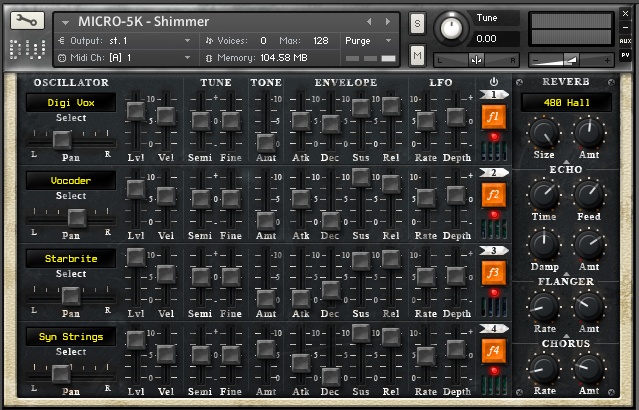
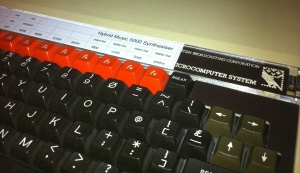


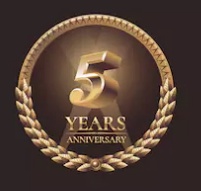 Its hard to believe its 5 years almost to the day that Hideaway Studio officially opened its doors and its a proud moment. Over the past 5 years I have captured tens of thousands of raw samples from hundreds of hours of recordings resulting in 23 releases for NI Kontakt. Tens of thousands of copies have been sold and I have been blown away by the kind response from so many customers and clients. I have also been extremely excited that my libraries have been immortalised in everything from major film scores and commercial albums to TV scores and computer games around the world.
Its hard to believe its 5 years almost to the day that Hideaway Studio officially opened its doors and its a proud moment. Over the past 5 years I have captured tens of thousands of raw samples from hundreds of hours of recordings resulting in 23 releases for NI Kontakt. Tens of thousands of copies have been sold and I have been blown away by the kind response from so many customers and clients. I have also been extremely excited that my libraries have been immortalised in everything from major film scores and commercial albums to TV scores and computer games around the world.

